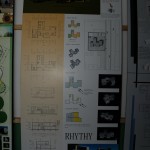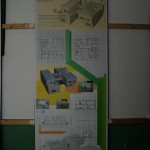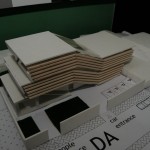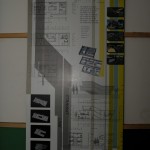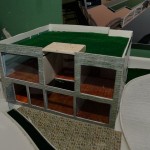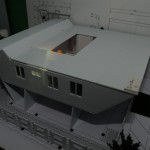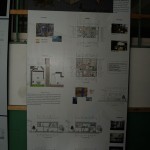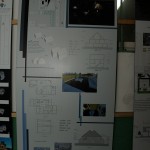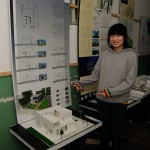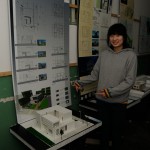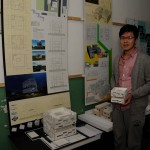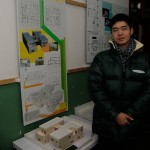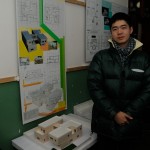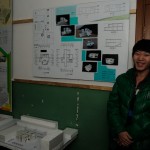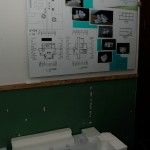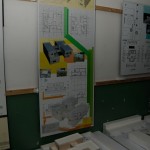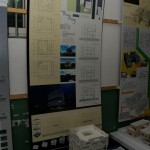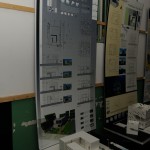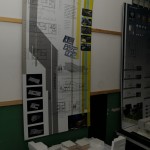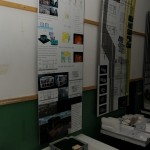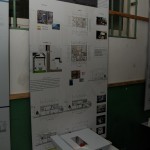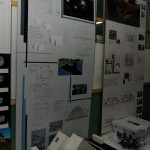Category Archives: Data
liuhaijun
What about you…
봄이네요.
我们国际学院学生收到佳作奖!!!
2012年度UA竞赛作品最终评审结果
一等奖
注册号:UA338
参赛者:郝铭
学校:天津大学
指导:张颀
二等奖
注册号:UA204
参赛者:林霖、王申川、张开屏
学校:重庆大学建筑城规学院、深圳大学建筑与城市规划学院、西南科技大学土木工程与建筑学院
指导:邓蜀阳、龚维敏
注册号:UA786
参赛者:秦祎珊、王敬舒
学校:清华大学
指导:黄蔚欣
三等奖
注册号:UA604
参赛者:李晓迪、肖蕴峰、彭旭敏
学校:重庆大学
指导:魏皓严、黄海静
注册号:UA659
参赛者:赵颍、麻星臣
学校:四川大学
指导:丑国珍
注册号:UA209
参赛者:张荟亭、董名轩、谢嫒雯
学校:哈尔滨工业大学
指导:罗鹏
佳作奖
注册号:UA002
参赛者:韩骁宇、郭丽媛、高琼旻
指导:韦峰
注册号:UA004
参赛者:李莹韩、杨琪
学校:武汉理工大学
指导:李浩
注册号:UA011
参赛者:李泳妍、韦梦岚、蒋超
学校:华南理工大学
指导:林家奕
注册号:UA028
参赛者:赵兴华、吴越
学校:大连理工大学
注册号:UA031
参赛者:范宇亭、高上、刘克达
学校:沈阳建筑大学
注册号:UA043
参赛者:郑兆辰,周理,郑坚
学校:郑州大学
指导:谷溢
注册号:UA075
参赛者:黄伟、庆哲、全轲
学校:大连理工大学
指导:张宇
注册号:UA124
参赛者:姜川、王雁舒、周宇
学校:西安建筑科技大学
指导:陈景衡
注册号:UA133
参赛者:张子炀、张恂恂、伍利君
学校:重庆大学
指导:陈俊
注册号:UA146
参赛者:吴高延、黄里达、郑晓慧
学校:福州大学
指导:崔育新、马非
注册号:UA154
参赛者:陈良鹏、陈雅婷、袁琳
学校:福州大学
指导:崔育新、马非
注册号:UA212
参赛者:黄杨、楚超
学校:浙江大学
指导:陈帆、陈林
注册号:UA213
参赛者:于涛、张晨阳、石胜松
学校:清华大学
指导:邵磊
注册号:UA250
参赛者:管明斯、李雨楠、刘拓
学校:沈阳建筑大学
指导:王飒
注册号:UA285
参赛者:刘嵘、周子杰、朱昇凡
学校:东南大学
指导:龚恺
注册号:UA287
参赛者:陈佳玲、吴少贤
学校:中南大学
指导:罗明、郑瑾
注册号:UA299
参赛者:谭扬、王军
学校:武汉理工大学
指导:陈李波
注册号:UA303
参赛者:吴昊、郑渝鹏
学校:东南大学、非常建筑
指导:张永和、俞传飞
注册号:UA320
参赛者:李树鑫、杨静、赵淑廷
学校:郑州大学
指导:刘兴
注册号:UA374
参赛者:陈源、陈欣
学校:四川大学
指导:李强
注册号:UA396
参赛者:刘阳、柳海军、王俊程
学校:青岛理工大学
指导:金晏英
注册号:UA489
参赛者:李焱、黎魏、张帆
学校:东南大学
指导:俞传飞
注册号:UA521
参赛者:叶恒之、陈家傲、周千柳
学校:安徽建筑工业学院
指导:王薇、胡俊
注册号:UA600
参赛者:陈周跃、费兰、张启铭
学校:华南理工大学
指导:肖毅强
注册号:UA635
参赛者:沈晓飞
学校:同济大学
指导:袁烽
注册号:UA649
参赛者:杨智雄、丰叶、黎昶
学校:西北工业大学
指导:刘煜
注册号:UA652
参赛者:冯小航、姜薇
学校:天津大学
注册号:UA653
参赛者:杨圣喆、王梓瑞、谢东方
学校:安徽建筑工业学院
指导:王薇
注册号:UA735
参赛者:陆秋子、邹佳旻
学校:厦门大学
注册号:UA759
参赛者:邢宁乐、赵越、冯帅
学校:河北大学
指导:李纪伟、李崴
注册号:UA764
参赛者:李航、程一红
学校:哈尔滨工业大学、东北大学
指导:刘大平
注册号:UA782
参赛者:杨雪豪、黄山、陈思
学校:北方工业大学
指导:宋效巍
注册号:UA788
参赛者:杨烨、周谦、梁琛
学校:湖南大学
指导:陈晖、邓广、杨中
5 Pearls of Wisdom for Architecture Grads, by Phil Bernstein

Phil Bernstein is a Vice President at Autodesk and teaches at Yale (see our interview with him here). This post, originally published in 2011 on his blog as “Winter Commencement,” offers timeless advice for architecture students about to enter the job market.
As December now rolls around it’s the eve of my last lecture in my professional practice class at Yale. Although I’ve been teaching for almost twenty-five years, I still can’t believe how quickly the semester accelerates into Thanksgiving, and suddenly it’s all over but the shouting (or, in our case, final projects and juries). About the same time as the term slammed to a closed I received a note from a student at Prarie View A&M, asking many of the existential questions that must be facing architecture students nearing their degrees. Seemed like a good time to speculate a bit about that future, and what this year’s graduates might be facing as they confront the job market in the spring, with enough time between now and then to contemplate their options and plot their strategies, so here goes:
Read on to find out Phil Bernstein’s 5 tips for future grads, after the break…

What does the market look like out there for a young architect? Everyone knows we’re at the tail end of the worst economic spell in the history of the modern architecture profession, and it’s pretty clear now that the explosive growth that drove the mid-naughts (which peaked in 2007) won’t be seen again in the foreseable future; that bubble is permanently burst. Here in the U.S. there will always be some construction as long as the economy is functioning in some form, and there’s probably some pent-up demand once credit loosens. But it’s likely that the U.S. profession has been permanently downsized by 10 – 15%, and most firm growth will be in practices that are either working outside the country or trying different business models (see below). Of course, work outside the U.S, particularly in places like Brazil, China, India, and maybe Russia will continue to explode and someone will be doing those projects. Any one with an architecture degree and the ability to speak Portugese is going to be very busy for quite a long time. Here in the U.S., however there is the harsh reality that 6,000 folks with architecture degrees will graduate in the spring and enter a market where there may be as many as 20,000 unemployed (and more experienced) architects.
What’s the best strategy for getting a job? If only it were that simple. There is some hiring going on out there, and what differentiates younger architects from their older counterparts is experience with new technology and digital skills, and a willingness to see problems from a different perspective. Good firms realize that they need diversity in points of view, fresh intellectual resources, and a pipeline of future leaders. Stipulating my obvious conflict of interest here, technological skills are a huge differentiator as well. So is a willingness to be flexible in role and career path. Special note: lots of non-architectural firms are getting on the BIM bandwagon, and hiring architects to jockey those models. Other firms are partnering with builders, or even trying building themselves. A non-tradtional route to be sure, but one that thrusts you right in the middle of the problem. Isn’t that where you’d like to be?
How will the role of architects change in the next decade? This is the biggest question of the day, in my view. The relationship between those who design, those who build, and those who own and operate projects–and the process by which all that stuff happens–is evolving, and the days of strict separation of church and state (design and construction) are ending. That creates lots of challenges for architects to define what they are good at and care about (versus the imperial authorial role that we train for) but also opportunities to reposition the profession in a way that solves the broader problems of building rather than just design. But the role of (and need for) pure designers in the traditional sense will diminish.
Has my education prepared me for what I might face out there? I guess as an educator I’m supposed to proclaim “of course!” but honestly, I’m not really sure. We work very hard in our school to establish design bona fides in our students, and the foundational skills of design can be made to serve in a broad spectrum of issues that the profession must face. And I am not a believer that schools of architecture should produce “mini-architects” fully formed upon graduation–being a decent architect is simply too hard and the profession takes time to learn. But I often wonder whether what happens outside my classroom (where we wrestle with questions of what architects do and why, rather than how they do it) is enough to arm our students for the challenges described above. The world of practice is running much ahead of the academy (see “integrated project delivery,” “digital construction,” “BIM,” etc.) and I worry that the gap may soon get too great. I can certainly suggest that the organizations that are responsible for facing these questions might get on with it, and quickly.
What are my chances to stay in architecture? The pure math isn’t great (see 6,000 graduates/year), especially for folks who are looking for traditional roles in traditional firms. But maybe that’s the secret. For the last few spring terms (during the downturn) I have suggested to our students that they try to remain “on the grid” of the building industry, which actually employs millions of people–far more than the two hundred thousand architects working in firms here in the U.S. That grid includes firms of various flavors, engineering consultancies, contractors and subs, specialty consultants, even building product manufacturers. Staying on that grid keeps you attached to building, might provide some unique perspective and skills from which you could find the right spot in the making of buidlings, and injects some much-needed architectural perspective (no pun intended) across the building ecosystem. It’s both an employment plan and a marketing strategy to emphasize the importance of architecture as practiced by architects–where building is a central activity of a vibrant society. As many architects as can fan across that spectrum is all for the good, from my perspective.
Story via Phil Bernstein’s blog
환영합니다.
建本111 Housing
다들 한학기 동안 수고하셨습니다.
방학 잘 보내고 다음 학기에 봅시다… ^_^

























